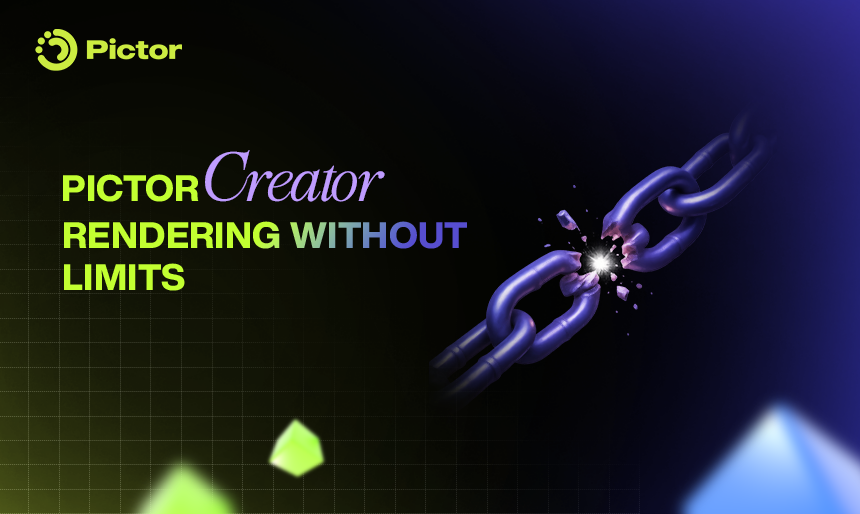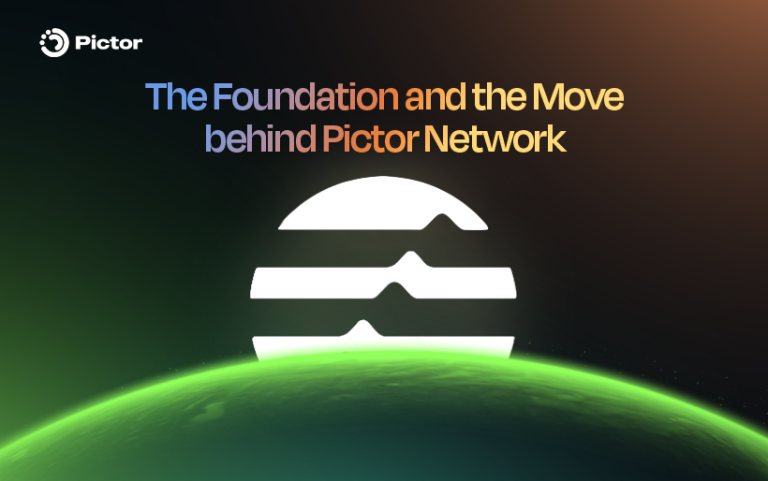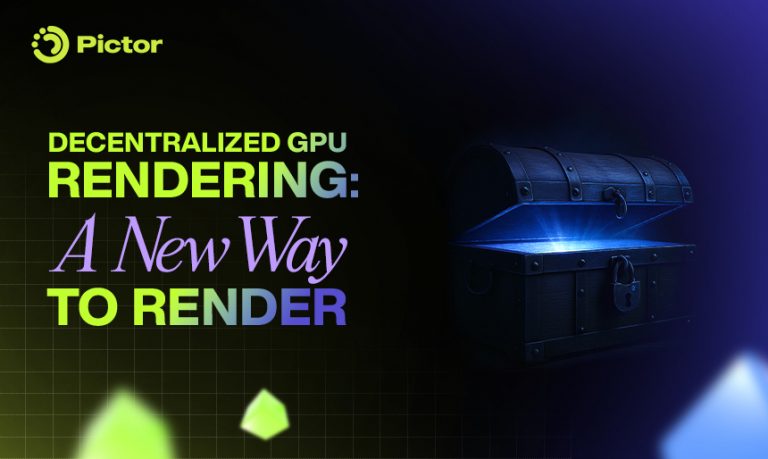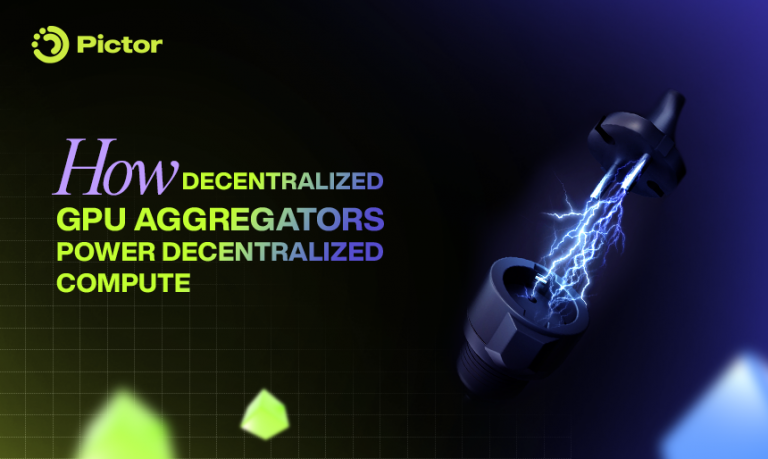You can model a world. But without rendering, no one will ever see it.
1. Who Are the Creators?
1.1 Rendering as the Creative Bottleneck
In any 3D production pipeline from architecture and film to gaming and VFX, the Creator is the one who shapes the scene: modeling geometry, painting textures, designing light, and animating movement. But none of these elements become visible until they’re rendered.
Rendering is the final gate between vision and output. It’s where the software simulates physics: calculating how light interacts with surfaces, how shadows fall, how reflections and materials behave. This process is GPU-intensive, especially at high resolutions or with ray tracing, volumetric lighting, and global illumination.
The more creative the scene, the more compute it demands. Creators constantly face render queues, memory limitations, license problems, and resolution trade-offs, not because their ideas aren’t feasible, but because their infrastructure isn’t built to support them.
That’s why rendering is often the biggest bottleneck in the creative process.
1.2 What “Creator” Means on Pictor Network
On Pictor Network, “Creator” is a defined role, but one with a broad scope. It includes anyone generating digital visuals who needs GPU resources to render or upscale their work.
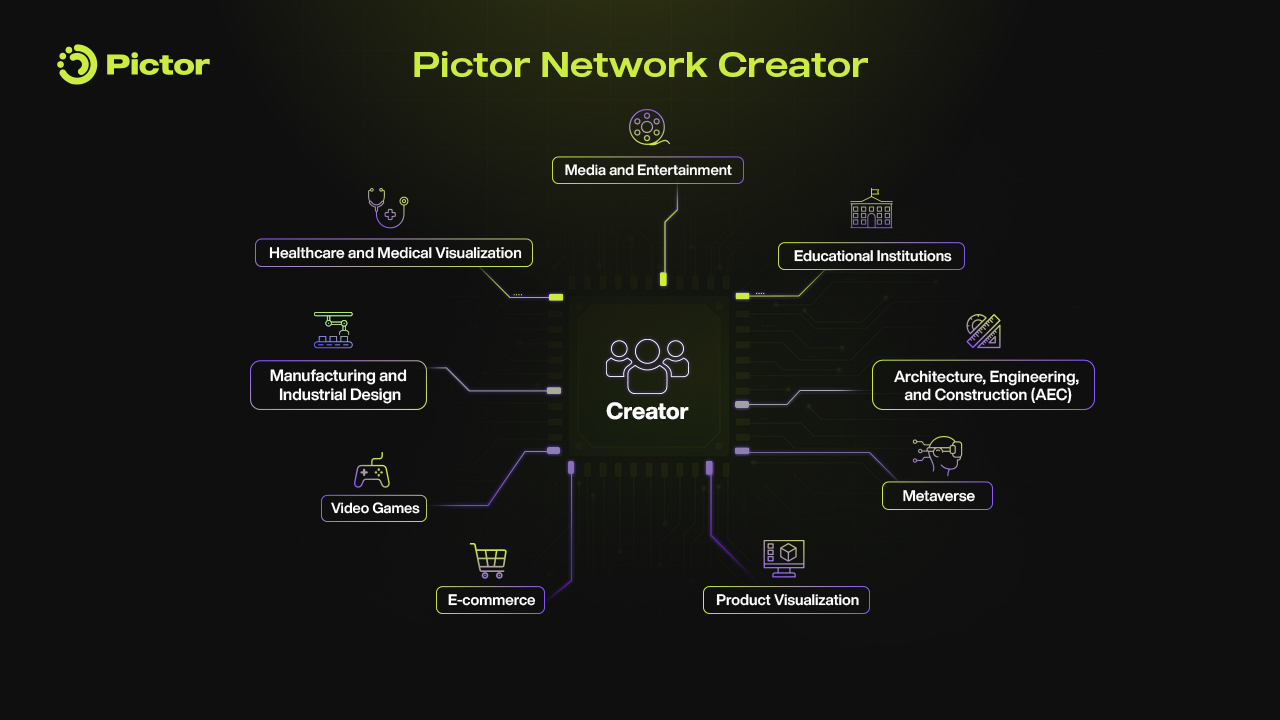
Creators are also referred to as 3D Creators, 3D Artists, Clients, GPU Requesters, Users, or Customers. They can be students working on graduation theses, freelancers delivering client projects, or large studios producing cinematic content.
What unites them is this: they are the demand-side participants of the Pictor ecosystem. Creators submit jobs to the network, which are then fulfilled by decentralized GPU Workers. Through this model, rendering and upscaling can happen at scale, with flexible pricing, software compatibility, and full security baked in.
Creators define the “what.” Pictor handles the “how.”
2. Who We Serve: Studios and Individuals
Pictor Network supports rendering needs across the spectrum, from complex pipelines in globally distributed studios to personal projects run from a single machine. Whether you’re a team of 50 or a team of one, if rendering is holding you back, we’re here to remove the limit.
2.1 Studios: Pipeline Diversity and Remote Workflows
Pipeline Diversity
In today’s production world, no two studios are alike. Some rely on end-to-end workflows in software like Blender. Others operate complex multi-stage pipelines where each task is assigned to a specialized tool:
- Modeling: 3ds Max, Autodesk Fusion
- UV Unwrapping: RizomUV
- Texturing & Materials: Foundry Mari, Adobe Substance 3D
- Scene Setup: Blender, Houdini
- Rigging & Animation: Autodesk Maya, Maxon Cinema 4D
- Rendering: Chaos V-Ray, Redshift, Arnold
- Color Grading: DaVinci Resolve
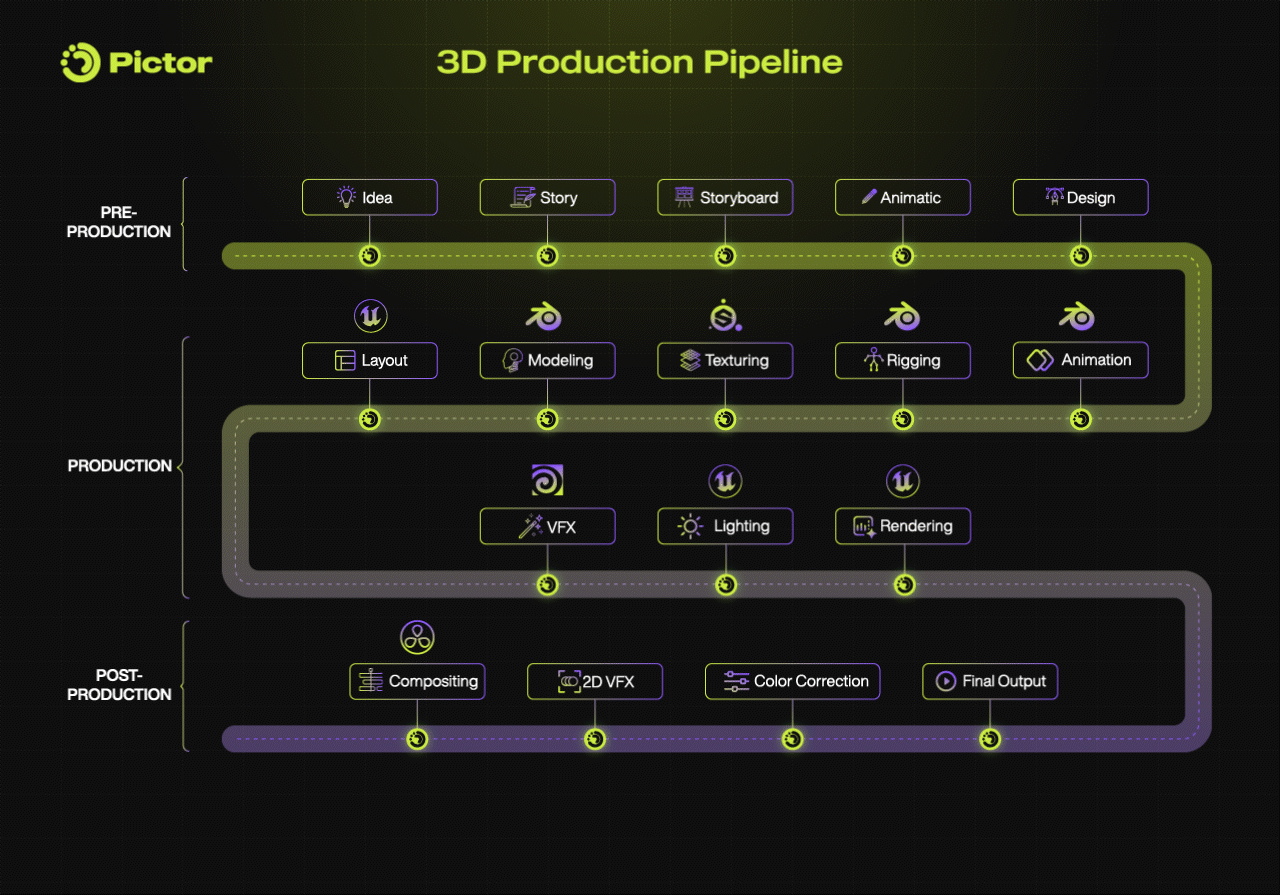
3D production pipeline (not 100% practical)
This diversity is intentional, it lets teams get the best results. However, it also introduces real challenges when it comes to rendering. Different engines, versions, plugins, and file types all need to sync. Centralized render farms often can’t support the full stack or require significant reformatting to work.
Outsourcing and remote working
The COVID-19 pandemic significantly accelerated the shift toward decentralized studio workflows. As a result, many teams moved to remote collaboration and global outsourcing, a trend that continues well beyond the pandemic.
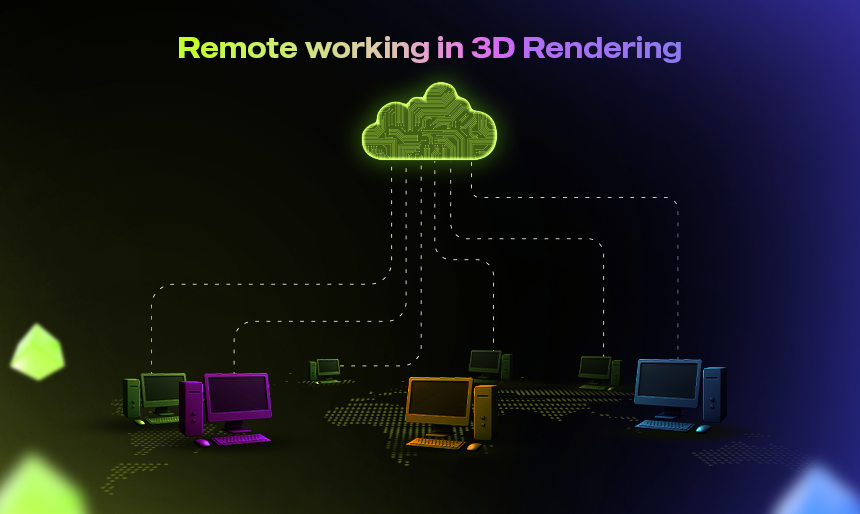
Remote working in 3D creative production
The workload can be divided globally, for example:
- USA: Project management, creative direction
- UK: Storyboarding, concept art, and character design
- India: 3D modeling, texturing, and lighting
- Brazil: Animation, rigging, and simulation
- South Korea: Compositing, visual effects, and final rendering
This model allows studios to access specialized talent and operate around the clock. However, it also creates new challenges, particularly at the rendering stage. Ensuring that software versions remain compatible across locations is difficult, and teams often lack consistent access to high-performance GPU infrastructure. Without scalable, location-independent rendering, even the most agile workflows can hit performance bottlenecks.
✅ How Pictor Network Fits
Pictor solves two major challenges for studios: pipeline complexity and distributed teams.
- Supports all software & versions: No need to change tools.
- Licensing included: We handle all render licenses.
- Global GPU access: Teams can render from anywhere, without local hardware limitations.
- Zero pipeline rewrites: Upload your native scene, no repackaging required.
- Scales on demand: Whether 10 frames or 10,000, rendering scales instantly.
Studios keep their creative workflow, and we take care of the rest.
2.2 Individuals: Students, Freelancers, Indie Artists
If studios face rendering complexity, individuals face accessibility.
Students building their portfolios, freelancers working under deadlines, and indie artists creating self-funded shorts all share one problem: they need more GPU power than their machines can handle.
They may be using Maya, Blender, Houdini, or C4D, depending on the project. Some render on local desktops, some test Web3 render platforms, only to discover they’re restricted to Octane or Blender. And for many, traditional cloud rendering is too expensive, slow, or too complex to configure.
✅ How Pictor Network Helps
We’ve built Pictor Network to empower individual creators, no matter what they use or where they start:
- Tap into powerful GPUs instantly
- Support for all major 3D software and render engines
- No extra cost for render licenses or plugins
- Render from your browser via Pictor Cloud, no setup needed
- Pay only for what you use, per job or minute
- Up to 80% cheaper than AWS, Google Cloud, or traditional render farms
Whether you’re a student pushing out your final project, a freelancer meeting a client deadline, or an indie creator working late into the night, we ensure you can render without delay, friction, or cost barriers.
3. Your Creativity. Our Compute.
At the end of the day, rendering shouldn’t hold creators back. It should elevate them. Whether you’re designing cities for the metaverse, crafting cinematic sequences, or exploring 3D art for the first time, your ideas deserve world-class infrastructure.
Pictor Network makes that infrastructure accessible and invisible.
Ready to Render Without Limits?
- 🔗 Explore Pictor Render
- 🐦 Follow us on X
- 📢 Join our Telegram
- 💬 Hop into Discord
- 💼 Connect on LinkedIn
- ▶️ Explore more on YouTube
In the 3D pipeline, rendering is where vision meets physics. Pictor Network is the GPU grid that bridges them.

